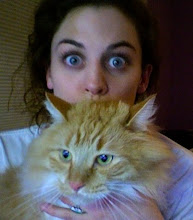Saturday, October 31, 2009
Reverse Brainstorming
Final Task
- Solar Energy Harvesting
- Microcontroller programming (Arduino) and circuit building
- Parametric modeling (Digital Project)
- Digital Fabrication
- What are we trying to do?
- What does it look like?
- Do the job for you
- Create smoother interface
- Create dialogue
- Create characters/fictitious life
- Create/allow for understanding/education
- Expand
- Contract
- Distort
- Move
- React
- Light up
- Create shelter
- Sense (the environment and factors of it)
- And many more....
- track the sun
- reflect the sun
- concentrate the sun
- shade the sun
- inflate
- have and aperture (open and close)
- expand
- have layers
- direct the sun

Tuesday, October 20, 2009
Fiction vs. Reality
Friday, October 16, 2009
Testing and Finalizing
Tuesday, October 13, 2009
Monday, October 12, 2009
Task 4: Models and Direction
Task 4
Thursday, October 1, 2009
Task 3 / Homework 3
Task 2 / Homework 2
After working independently to make lights blink with our arduino boards, we gathered into groups, in true Smartsurfaces fashion, to expand on our newly developed skills. This week we combined the LDR light depending sensors with servo motors to create a contraption that follows or tracks light on two axes.
Objectives:
Your team's task is to design, build, program and test a device that tracks a light source (handheld flashlight). This system should operate on dual axes and be active. Ideally it should be capable of:
- Tracking the light horizontally
- Tracking the light vertically
- Indication when it is in alignment with the light.
Video courtesy of team member Damien Stonick.
What you may not be able to see in the video are the lights that turn on when the light is "directly" in the center. I say "directly" only because we rigged up two LDRs so we could incorporate two colored LEDs, if for no other reason than spectacle. When the light (flashlight) is directly on one of the two LDRs (located in the center) a red or blue light shines through the smiley face cut out of the base.
The code for this project can be found on team member Michael Mathieu's blog.


































